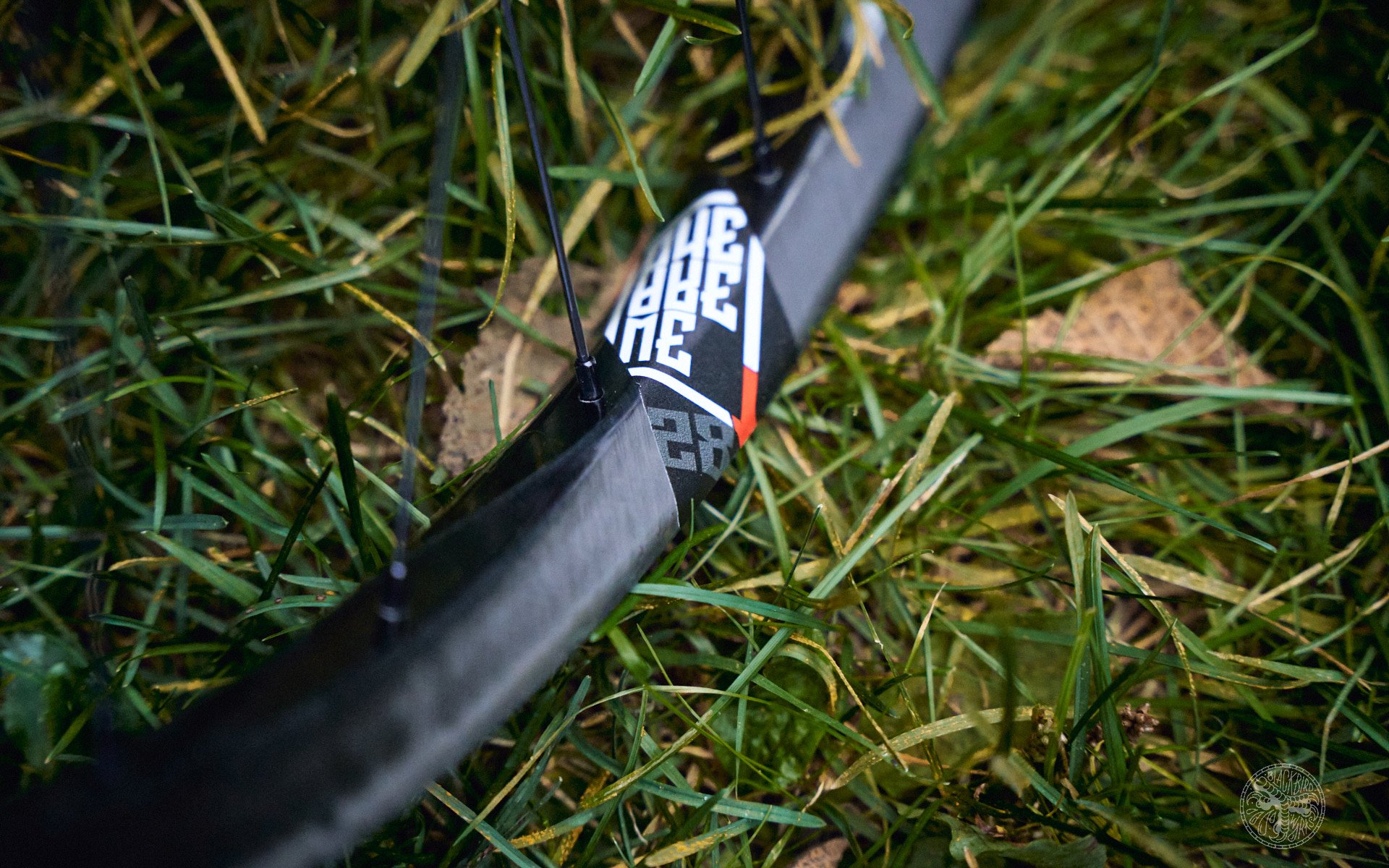
LONG TERM REVIEW
We Are One Convergence Wheelset
Made in Canada. For Canadians. And everyone else. Because we're nice like that.
It’s been a long, cold winter, and while the weather hasn’t exactly been conducive to bagging serious miles on a mountain bike, we North Vancouverites never really put the bikes away. What the winter has lacked in hours spent on the bike, it has made up for in utter punishment to the bike - and considering the frequency of crashes, botched lines and questionably low tire pressures that accompany winter riding, it’s safe to say that I’ve been able to put We Are One’s new Convergence wheels through the wringer.
In case you missed it, I had a quick first look at these wavy wonder hoops back in November when We Are One released the Convergence line to the world. Building on previous experience with their Revolution line, WAO developed the Convergence to realize further gains in durability, ride comfort and performance.
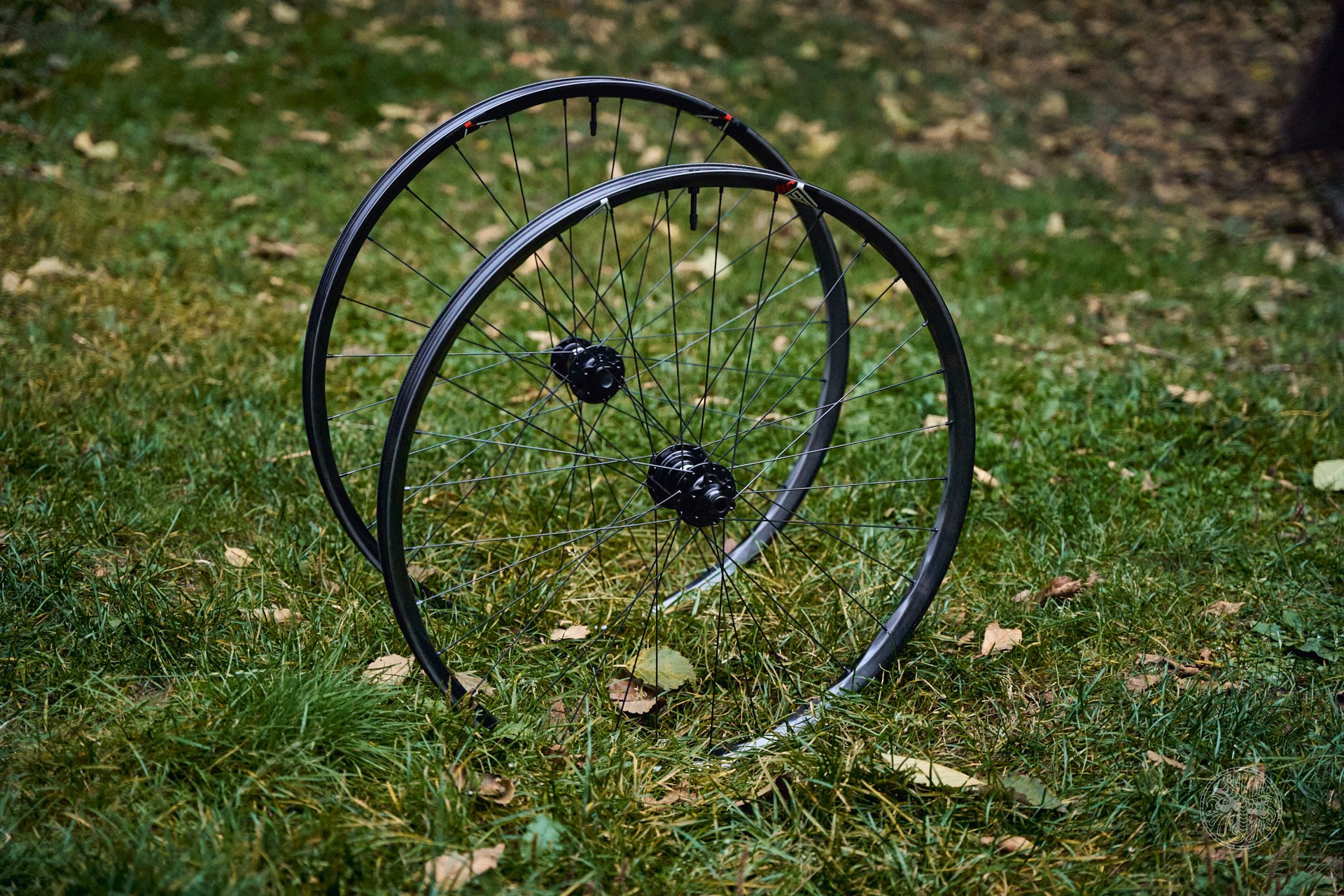
This was the first and last time these wheels saw grass. It's been a long winter.
For a quick recap, the Convergence series features three tire bead widths: the 28mm Sector, the 30mm Triad, and the 33mm Fuse, and it’s worth noting that all three widths are available in 29er size, while 27.5” is only available in the 30mm width. Complete wheelsets feature 28 spoke fronts and 32 spoke rears. While I really dig We Are One’s branding and identity overall, I have to admit that the whole Sector / Triad / Fuse naming convention feels a bit cumbersome. I guess I’m just a numbers guy, and I appreciate any effort to avoid filling my head with extraneous information. Can I instantly tell you what bead width I prefer on a rim? Absolutely. Can I instantly recall whether that width corresponds to Sector or Triad or Daryl? Unlikely. We Are One got it so right with the naming of the Arrival 152 and Arrival 170, so I’m not sure what happened with the new rims. I’m willing to let the awkward names slide though, simply because they look so damn good. But as much as I’m a sucker for pretty bike bits, we all know that there’s a lot more to a great wheelset than good looks - so let’s dig into these 29er Triads* I’ve been rolling around on.
*(that’s the 30mm bead in case you forgot already).

Regardless of the "trail" conditions, the Convergence wheels were laser precise at all times.
At the moment, the only standard Convergence build option from We Are One are rims laced to black Industry Nine Hydra hubs using black Sapim Race spokes and nipples. If you absolutely must have something different, WAO offers a custom wheel-building program that allows you a little more leeway in terms of rim, hub and spoke options. Of course, you can always order the rims alone and have your dream wheels built up however you want.
The I9 Hydra hubs found on the standard Convergence build are anything but standard. If ridiculously high freehub engagement is your thing, you’ve come to the right place. With an engagement step of 0.52°, only the fussiest of technical climbers will find something to complain about here, and off the top of my head, I only know of one hub that engages quicker, and that of course is the instantly engaging, sprag clutch-equipped Onyx Vesper (which is available through We Are One’s custom wheel build program). The beautifully machined and anodized hubs complement the rim aesthetics, and whether you like it or not, the freehub body comes stock with that unmistakable I9 sound: loud, buzzy and expensive.
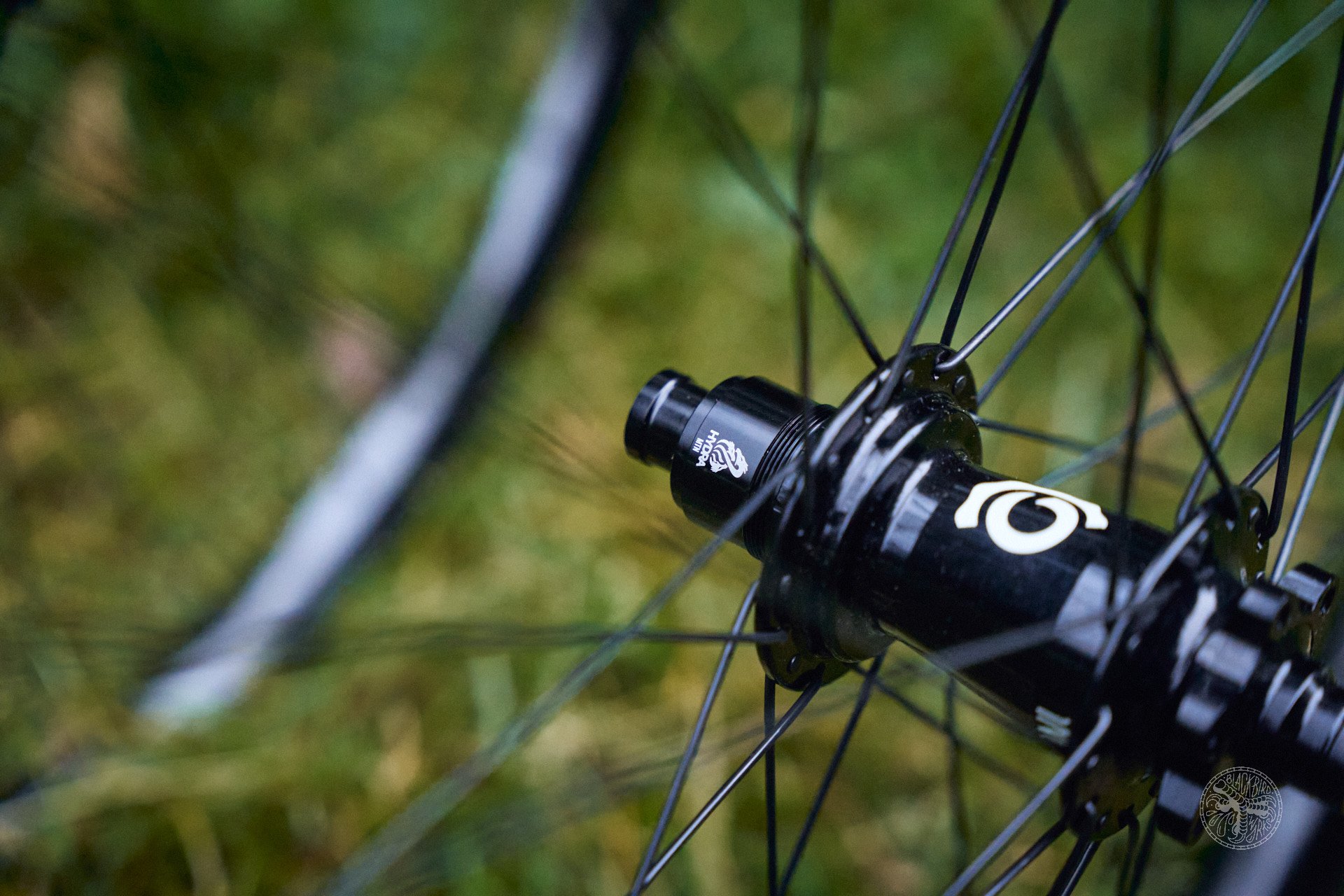
Industry Nine Hydra hubs are things of beauty, but I found something to whine about here.....
Detour ahead.
While I certainly wouldn’t consider myself a fussy technical climber, I do have a bone to pick with the 0.52° engagement of the Hydra hub (WARNING: controversial discussion ahead!). There’s been a lot of talk lately about the effects of chain tension on rear suspension (or lack thereof), and quite frankly, it’s a horse that’s been furiously flogged, with some very smart people on both sides of the debate. I myself fall into the camp that believes that there are fleeting moments where a typical (i.e.: not high-pivot, regular drivetrain) rear suspension system is negatively affected by chain tension. Steve from Vorsprung Suspension does an excellent job explaining the effect in this video - it’s 14 minutes well spent, and will help you follow along for the next few paragraphs if it’s a phenomenon you’re unfamiliar with. Watch it, because I don’t have the word count allowance to explain it to you.
The important thing to glean from Steve’s video is that when the rear wheel is rotating quickly, chain tension is very unlikely to have any effect on the rear suspension, as the chain growth experienced by a bike sinking into its travel isn’t able to “catch up” to the freehub body while coasting. On the other hand, a slowly rotating or locked-up wheel has a much higher likelihood of experiencing pedal kickback under suspension compression, as the growing chain has a better chance of engaging the freehub body, meaning your weight on the pedals will momentarily hinder your suspension from compressing freely. Where I start to disagree with Steve is on the actual amount of time our bikes spend in these low RPM scenarios.
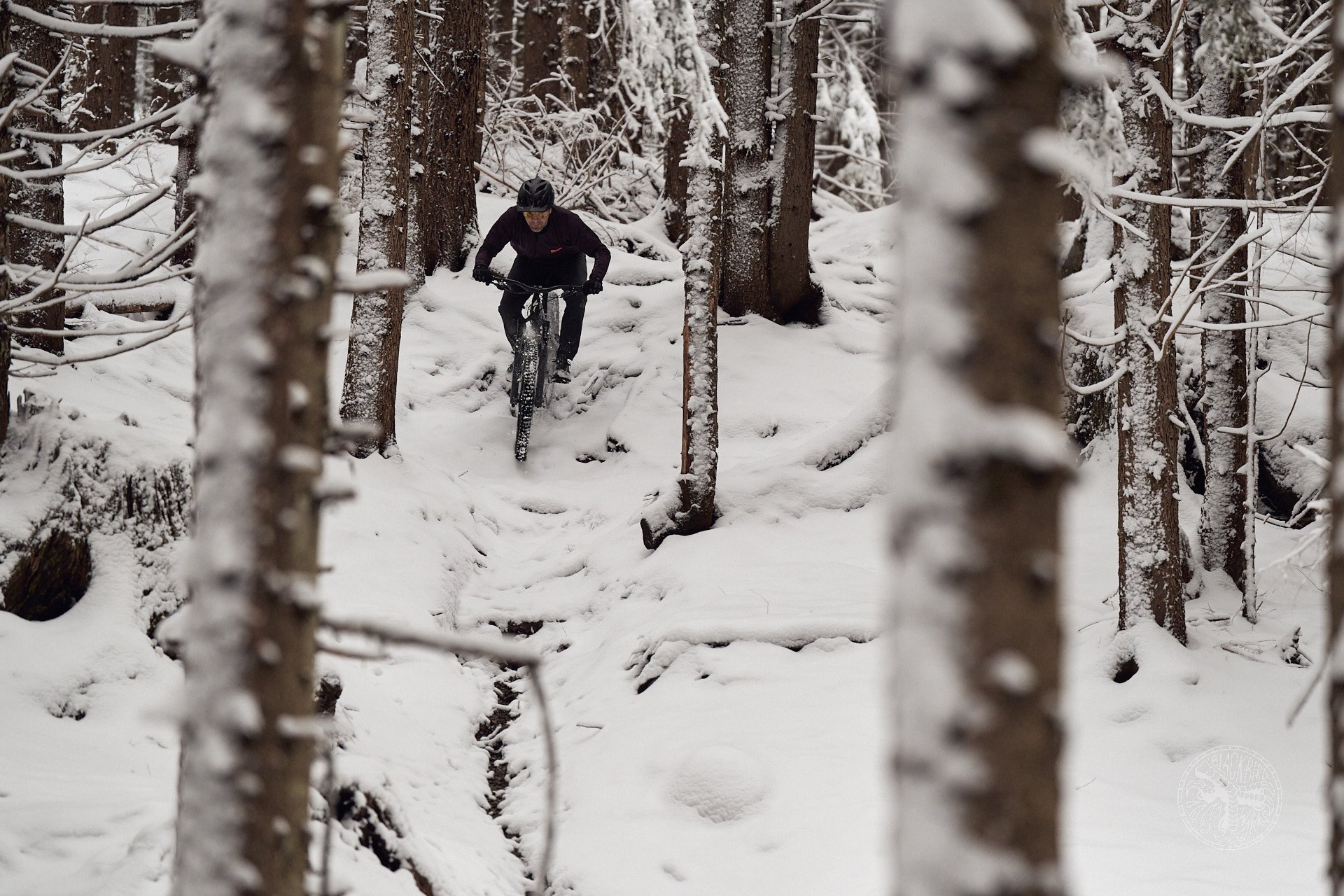
There is a 100% chance that my rear wheel was locked-up in this photo.
In a perfect world, our tires maintain traction at all times, our wheels rotate in sync with the oncoming terrain, and the likelihood of chain tension affecting the suspension at any given moment is basically zero. But it’s not a perfect world, and mountain biking is really just a game of how exciting things get when searching for that elusive traction. Particularly for those of us riding long travel bikes on steep, technical trails, I’m convinced that our rear wheels spend a lot more time locked up (or close to it) than we think, and it’s these moments where chain tension can indeed affect the suspension. It’s also these locked up moments where traction is of paramount importance. I obviously try my best to not lock up my 220mm CODE rotors, but when I do, the last thing I want is for 170mm of salvation to suddenly stiffen up and buck me offline when I’m already skidding or sliding at the edge of control. Pedal kickback is a traction killer. If you don’t believe that our rear wheels spend that much time rotating slowly, if not completely locked-up, just have a look at the promo video for the very wheels I’m reviewing here:
There are a few expensive, heavy, and often complicated bolt-on gizmos out there that claim to reduce the effects of pedal kickback, but what if I told you there was a much simpler solution? You’ll be disappointed to hear that the solution is low-tech, and not sexy. Hell, they’re giving these things away with every bike these days. Of course, I’m talking about a low-engagement freehub body.
A freehub body with low engagement is less likely to cause pedal kickback while the suspension is compressing because there is more room to “float” between engagement points. All other things being equal, I can feel the difference in suspension performance between a very high engagement hub, and a low engagement hub. The effect is subtle, but it’s there. I’m also convinced that being a flat pedal rider, I’m forced to be more keenly aware of what my suspension is or isn’t doing properly.
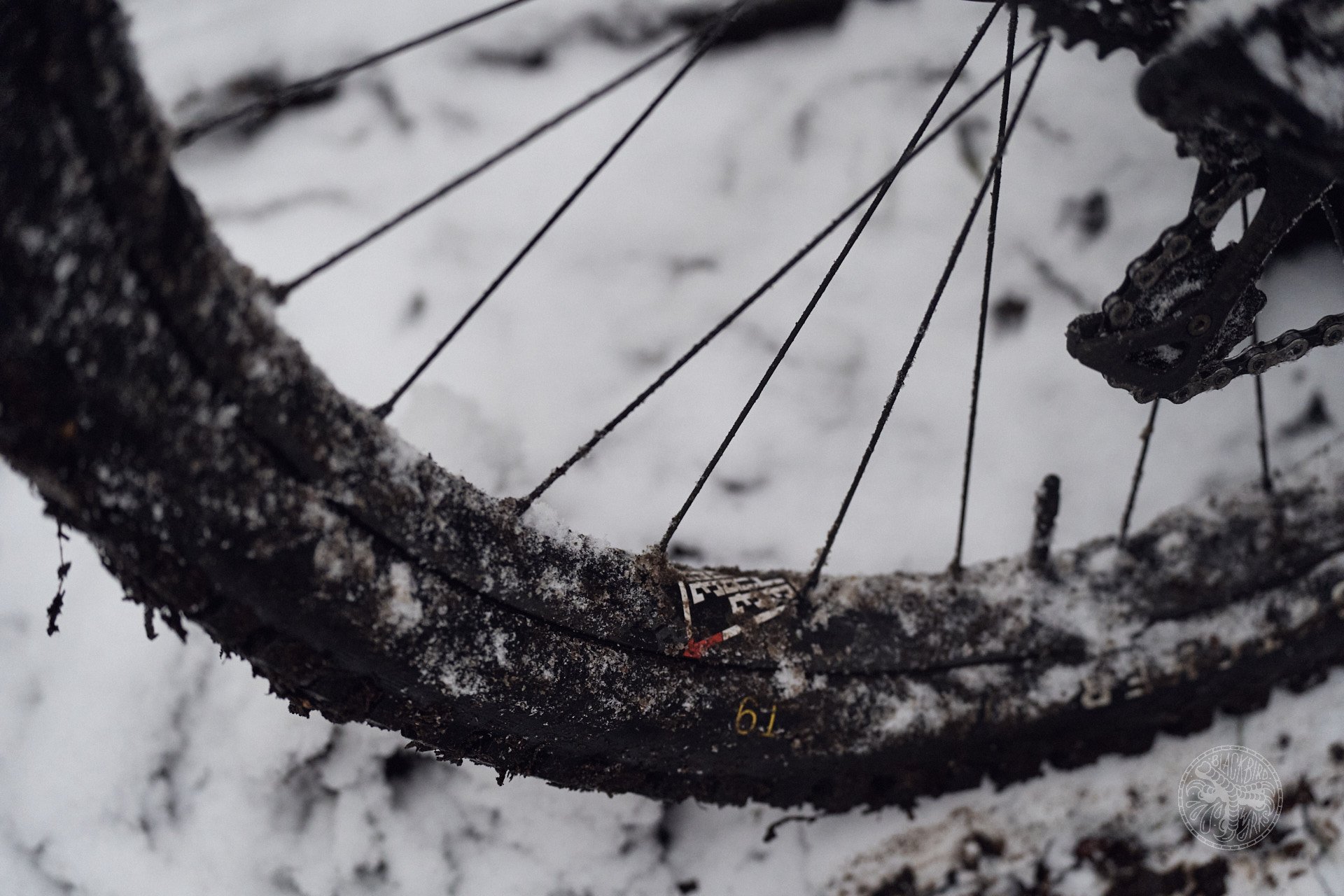
Some very Canadian conditions.
With all that nonsense out of the way, you can start to understand why the truly slop-tastic 20° engagement on my DT 350 is the stuff of dreams for me. Of course, you’re perfectly within your rights to think I’m wrong / crazy / stupid for my thoughts on freehub body engagement, and that’s ok! Most riders aren’t going to notice this minor effect anyway, and I’m the first to admit that a 0.52° engagement brings some obvious performance benefits while pedalling. Low engagement, high engagement... having choices is the best!
Now that I’ve thoroughly derailed this We Are One wheel review, you might wonder why I flew off the rails in the first place. Well, as you’re about to find out, I couldn’t really fault the Convergence rims for anything at all - and trust me, I tried to fault them. Being a mountain biker, I had to complain about something, and I sure would love to see the Convergence offered with some other standard hub options. Don’t get me wrong, the Hydras are beautiful and sound way out of my tax bracket - I just wish they had 600 fewer points of engagement. I’m sure there are plenty of behind-the-scenes supply and SKU considerations that explain why WAO offers the Hydra as their lone standard option. If you’re on board with the low-engagement movement, WAO does offer a custom build with the excellent Industry Nine 1/1 hubs. While not as bougie as the Hydra, they have been very reliable in my experience, and while 4° engagement isn’t really that low, it’s certainly lower than 0.52°.
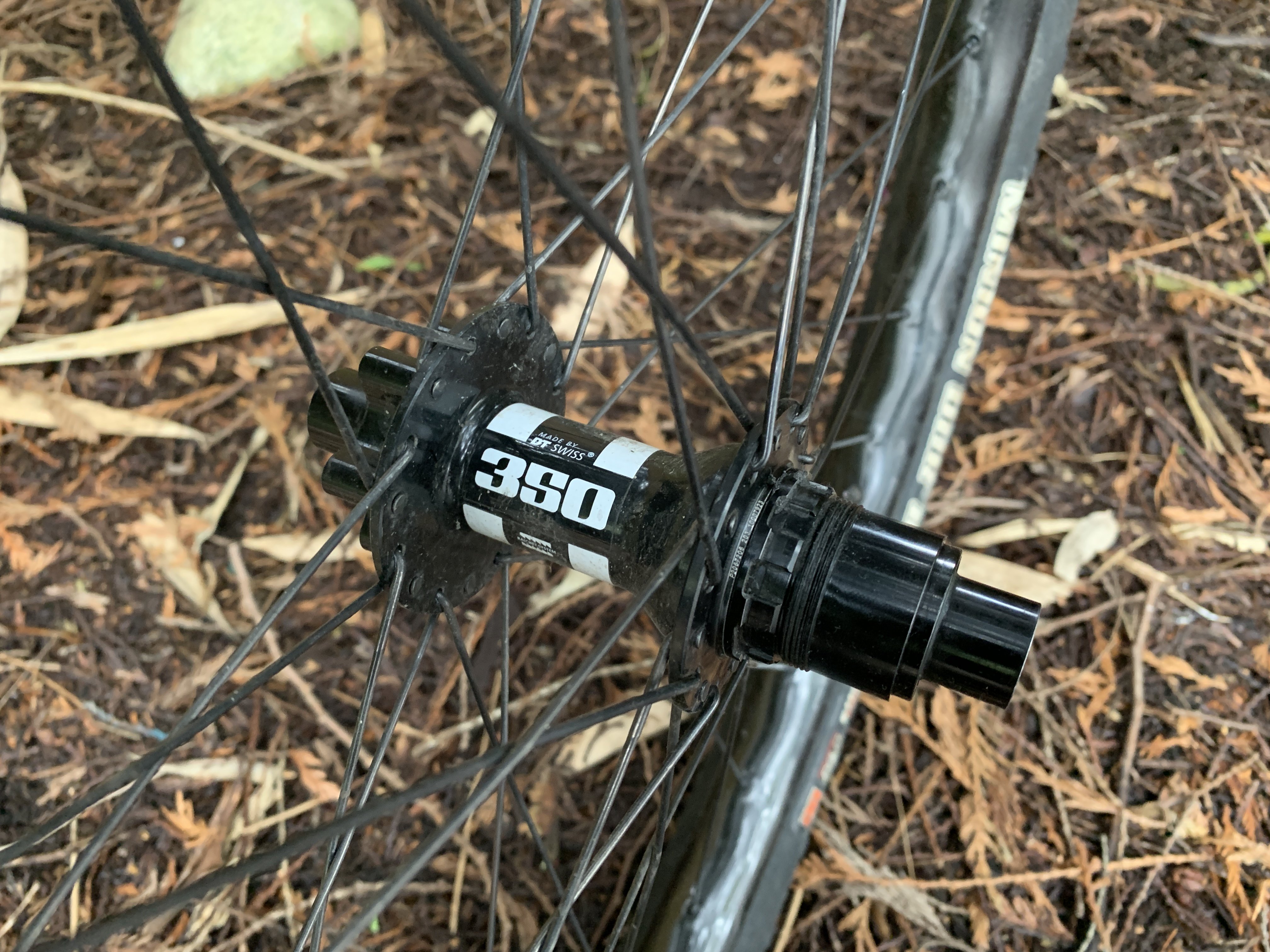
It's boring, quiet, inexpensive, and has 20° engagement. You can have it over my dead body. Word on the street is that the newer generation DT hubs have some reliability issues, so this one is never, ever leaving me.
Might be time to talk about the rims now.
Wheels (and rims in particular) are not the easiest things to review - you either have a miserable experience where rim issues can cause premature endings to rides, or a great experience in which case the rims fade into the background and you never need to give them a second thought. We’ve come a long way in the tech behind carbon fibre mountain bike rims, and gone are the days where we had to put up with the bone-jarring ride of warmed-over, fattened up road rims.
The Convergence wheels feel downright comfortable at all speeds, never feeling too stiff or fatiguing, but are among the most precise steering wheels I’ve ever experienced. One of the goals WAO set out to achieve was a more compliant ride compared to their Revolution line of rims. They accomplished this through a thinner radial cross section, as well as a different carbon layup. The result is a Triad rim that is claimed to be 28.8% less radially stiff than the equivalent Union. I’ve spent a fair amount of time on Unions, and while I had no real complaints, they were noticeably less compliant than other wheels I was riding at the time. The Unions were strong and precise, but after long hours in the saddle, I could definitively say they resulted in a bit more fatigue towards the end of the day.
The Triad rims are noticeably more comfortable after extended periods of riding, and I’d argue they might even hold a better line through variable trail conditions. In spite of the increased vertical compliance, I never felt like I was giving anything up when diving deep into berms at high speed. On sections of trail where other wheels tend to twist and squirm under heavy side loading, the Triads remain completely unfazed.
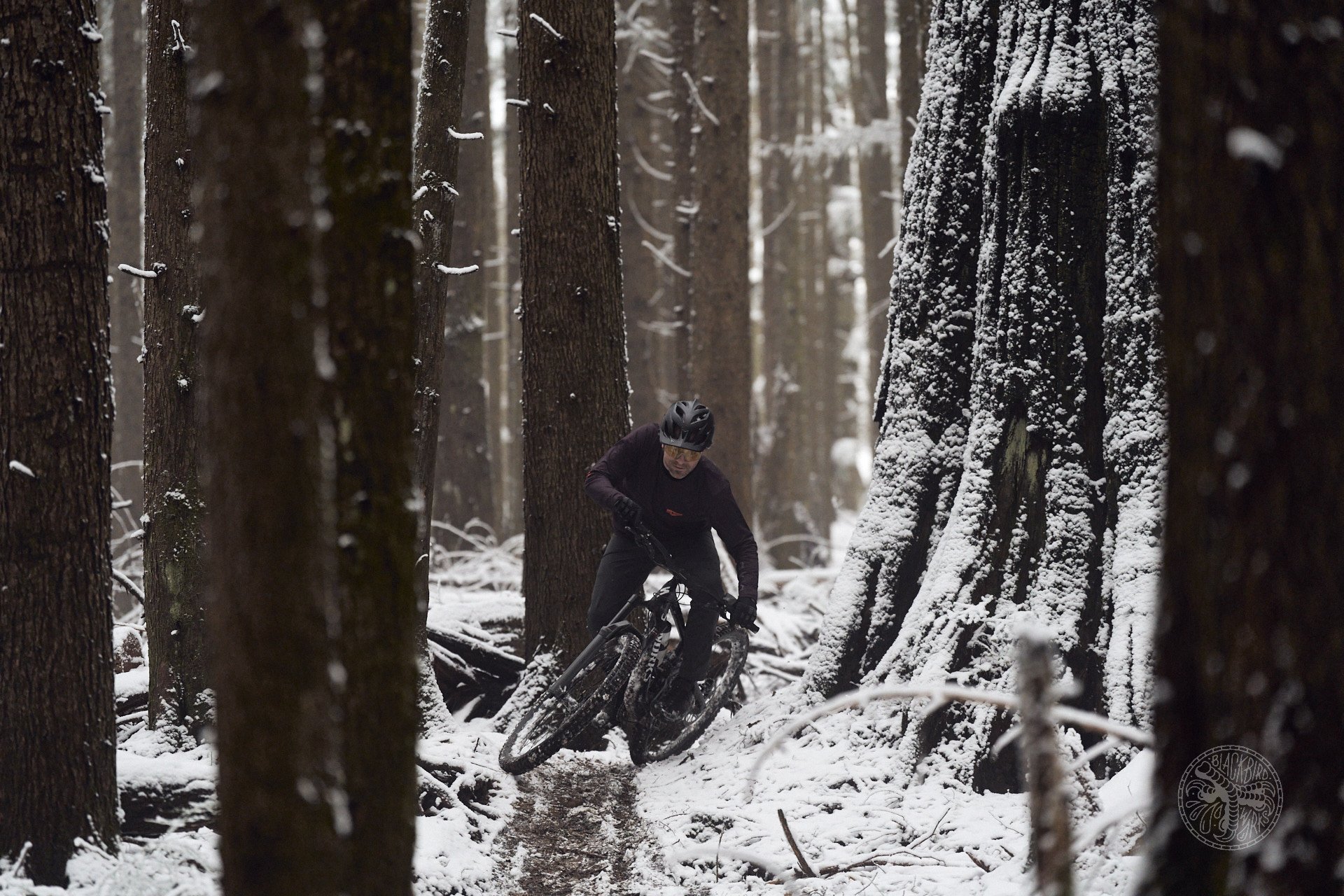
The best wheels are the ones you never have to think about. Here, I'm definitely thinking about pho for dinner.
I reached out to Adam Marchand, an engineer at We Are One, and asked him to explain in layman’s terms how they were able to make a rim that tracks so well, but remains comfortable to ride:
“Specifically with the Convergence, you’re probably feeling the articulation of the spoke itself through the chunder. When you’re plowing through a rock garden, the lateral stiffness of the rim allows the rim to squirm left and right to conform better to the trail, improving your grip but at the cost of cornering performance. Lateral stiffness is mostly dictated by the laminate itself, as changing the width to the rim impacts the feel of the tire compared to changing the cross section height to adjust radial stiffness. There is a fine balance to be struck here, as a laterally softer wheel will feel buttery smooth through rough chunder as the rim can move small amounts to get around obstacles, but will feel vague and inefficient through hard cornering. The Convergence takes this one step further by aligning the inside of the rim’s surface to the exit angle of the spoke at each spoke hole. Because the entire nipple is in contact with the carbon inside of the rim as opposed to just a point, the nipple has a lot more freedom to move as the rim deforms through a rock garden, without needing to sacrifice lateral stiffness in corners. Of course, the radial stiffness does play into this as well by allowing the rim to compress and take up some of the harshness, but the “squirm” feel is dominated by the lateral rim stiffness.”
Along with some other explanations from Adam, I’ve really come to believe that much of the magic of these rims lies in the design of the nipple bed. The fact that each nipple contacts the rim at an ideal 90° angle means that the lateral centre of the rim is securely locked in place for steering precision, while the carbon layup and thinner radial cross section allows the rim some compliance over chunder. As Adam stated, there’s a fine balance to be struck here, and it feels to me like We Are One have nailed that balance.
The following video shows how the wavy cross section of the Convergence rim allows for an ideal 360° of contact for each nipple in the rim bed. Form follows function.
While we here at NSMB are huge fans of sticking chunks of foam inside our tires, I did spend my first few weeks with the Convergence sans inserts. A new set of Specialized Grid Gravity Butchers mounted and aired up easily, and while I wasn’t foolish enough to dip into dangerously low tire pressure territory without inserts installed (even product reviewers dislike having to fix flats on the trail, and I'm one of those dummies who never packs a tube), the Triads were not treated gently. I’ve found that riding in the variable snow conditions we get on the coast can put weird forces on a wheel. Hard, crusty snow tends to grab your wheels and twist them in all kinds of unnatural ways, particularly when they sink down under a hard, frozen top layer. Broken spokes and wheels knocked way out of true are often the result of riding and crashing in the snow. 29er wheels compound the issue, as the forces encountered at the contact patch gain more leverage across the wheel build thanks to the larger radius of the wheel. I wish I had something exciting to report after months of this kind of abuse, but the Convergence wheels never skipped a beat, still straight as an arrow, and sporting all 60 original Sapim Race spokes, with no noticeable loss of tension. I think this outcome speaks to the quality of the wheel build from WAO as much as to the rim itself.
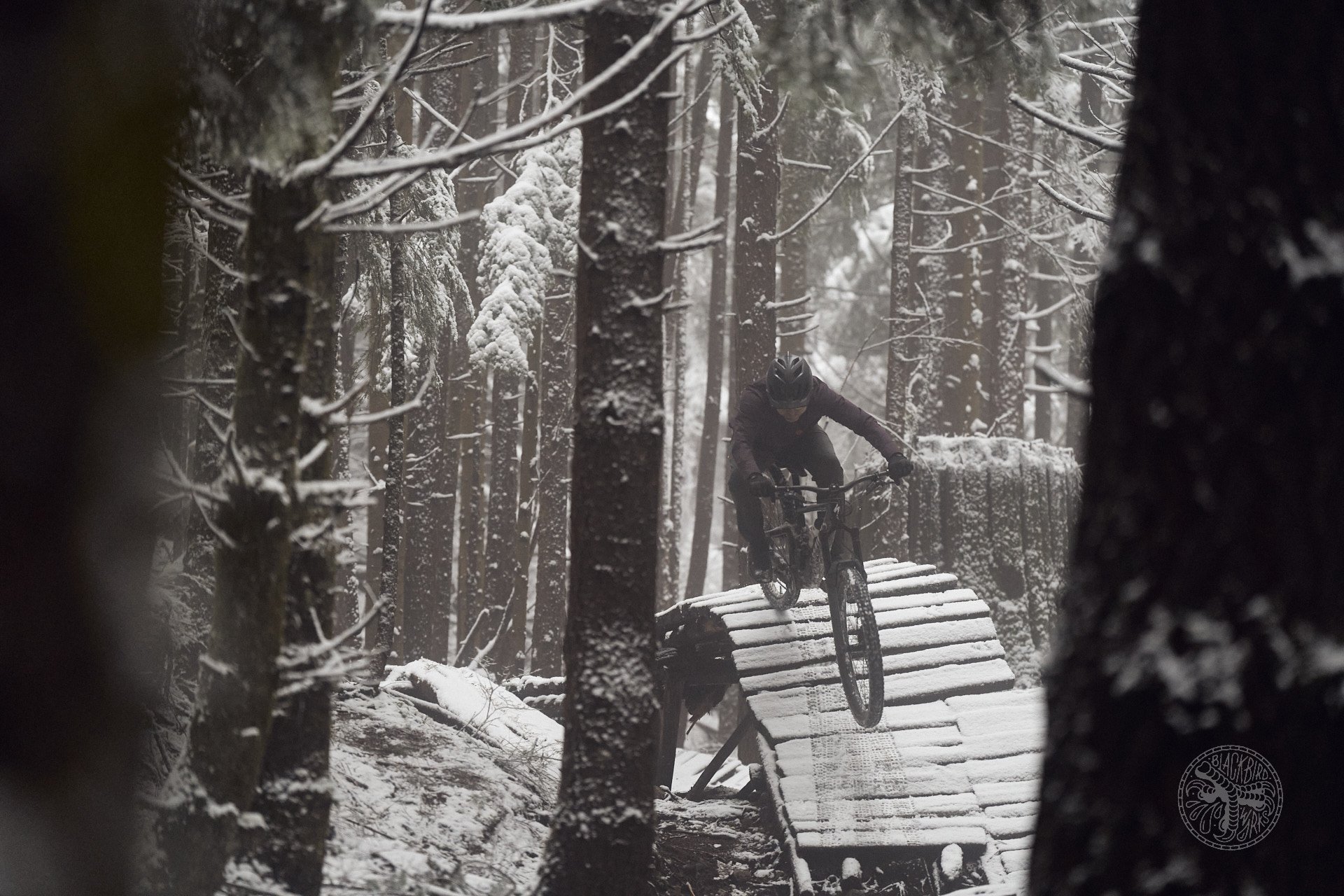
Not a spot where you want a wishy-washy wheelset.
Notwithstanding my earlier rant, the Hydra hubs performed flawlessly throughout the review period as well. Interestingly, I realized that I was unconsciously changing my body position on the bike to help alleviate the pedal kickback during heavy braking. Historically, I’ve always tended to ride over the front end, as it keeps the front wheel tracking, while the rear end remains easy to unweight and throw around for course corrections. As 29er geometry seems to have settled down into a very stable and capable arrangement, I’ve strived to centre my weight “inside” the wheels more to take advantage of this stability. Old dogs, new tricks, amirite? With the high engagement Hydra hub, I found myself shifting back a bit, allowing my weight to plant the rear wheel more firmly into the terrain, reducing the likelihood of lock-up. It took me a while to realize I was making this adjustment to my body positioning, and I have to admit that I didn’t immediately dislike it. While I still stand by my preference for low engagement freehub bodies, I feel like the minor suspension handicap has improved my riding position to better suit the long/low/slack 29er geometry that we’re all still trying to figure out.
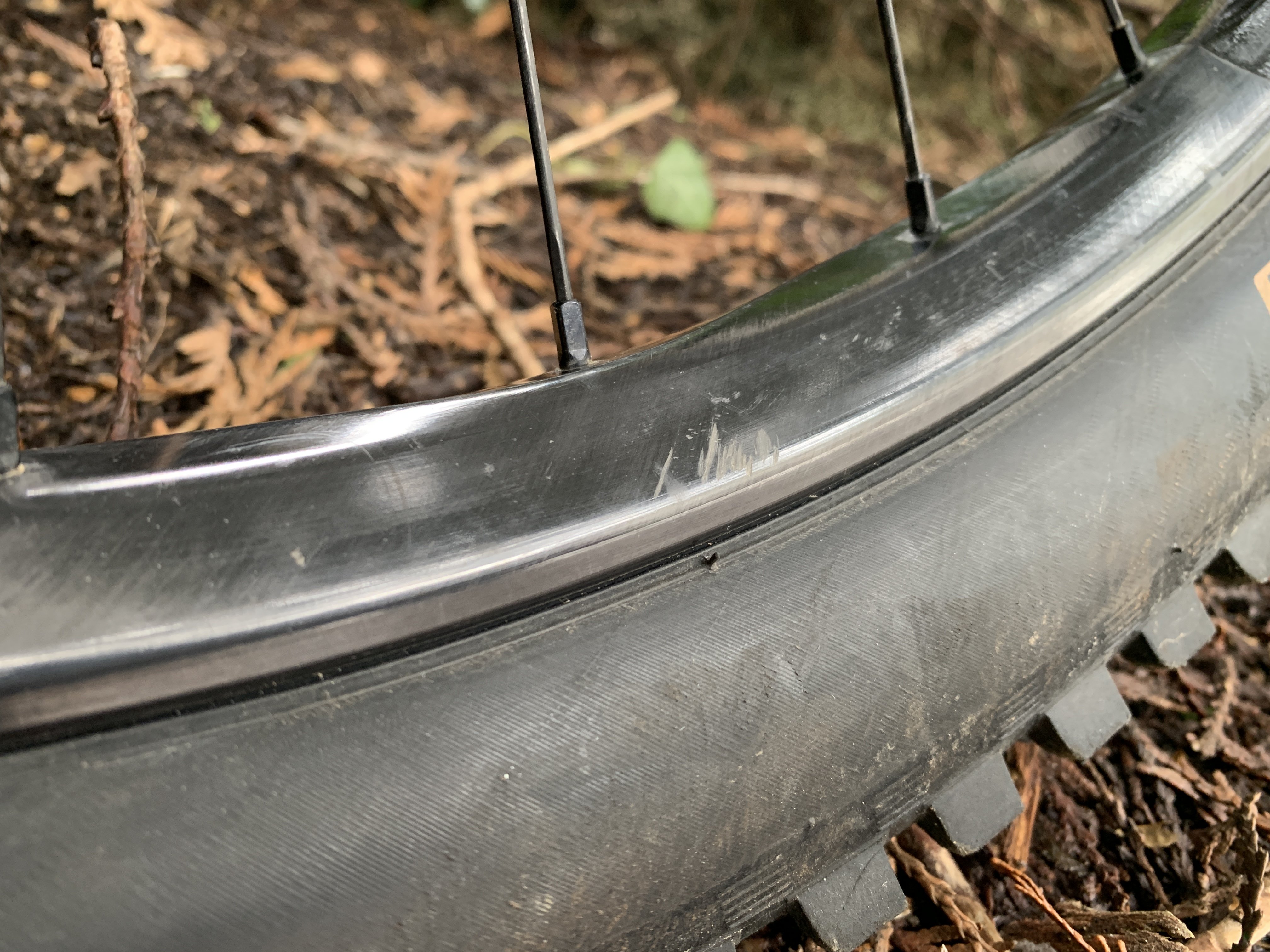
Carbon rims inevitably incur cosmetic damage after months of abuse. My Triads seem to have suffered far less than expected, and this scuff was the biggest battle scar I could find.
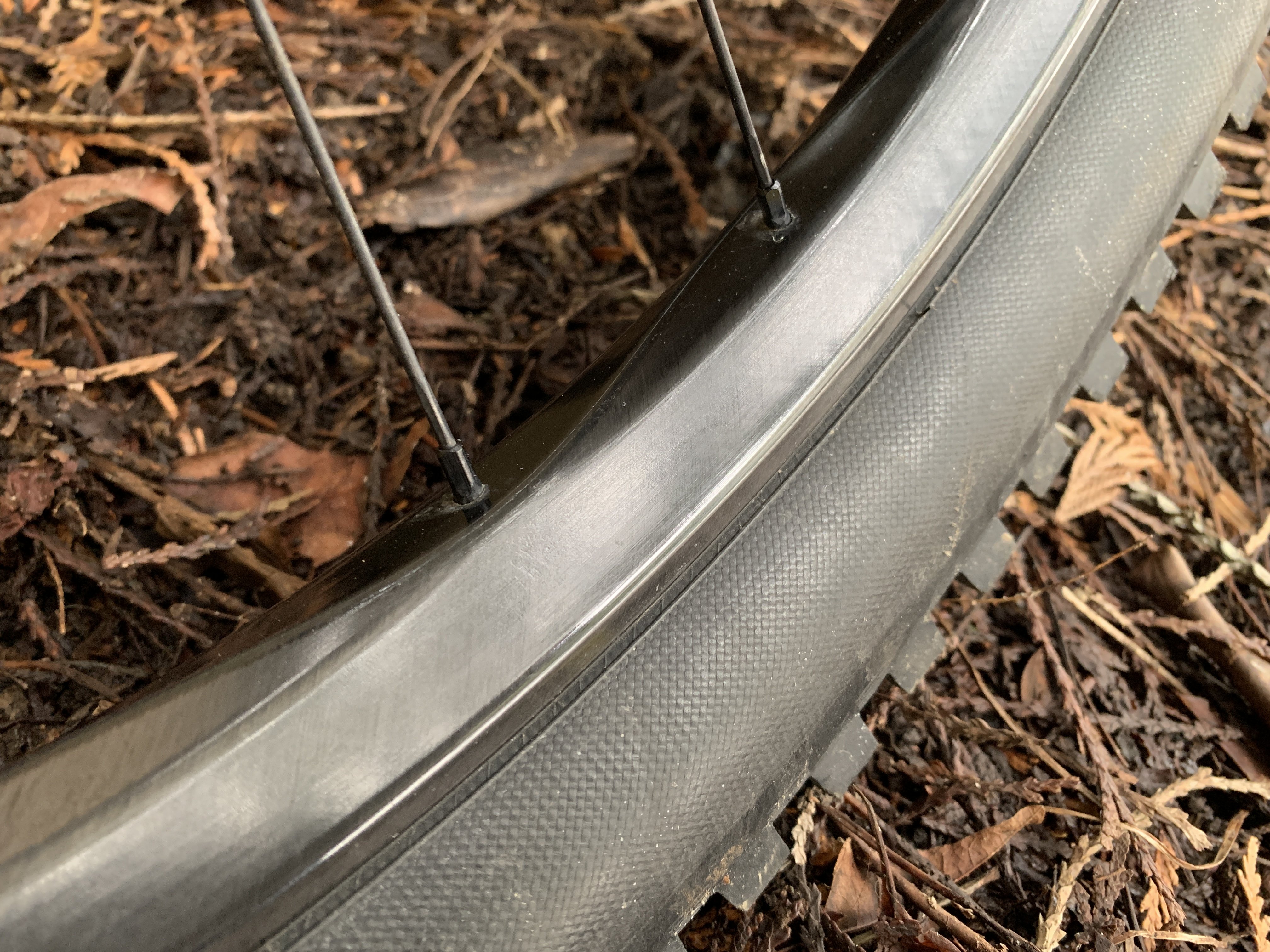
The majority of the rim surface still looks new after 4 months, with no bead damage to speak of.
A good carbon wheelset always seems expensive at the outset, but if you’re like me and accustomed to sending a small fortune worth of alloy rims to the recycling bin every season, carbon done right can make a lot of sense financially. We Are One seem to have done everything right with the Convergence - they are as comfortable to ride as any alloy rim I’ve tried in recent memory, but bring the precision and low maintenance of carbon. When you factor in the peace of mind in knowing that if you manage to break a rim while riding, We Are One will replace it no questions asked, 2,000 CAD starts to sound pretty reasonable. At the time of publication, WAO are even including a free set of Maxxis tires included with every Convergence wheelset. TWO Maxxis tires for FREE!? That’s like a $700* value these days (asterisk for sarcasm -Ed)! If a $2,000 wheelset is hard for you to justify, WAO still offers their Revolution rims and wheelsets at a substantially lower price point. A Union wheelset built on Industry Nine 1/1 hubs can be had for 1,400 CAD. - an absurdly good value, all things considered.
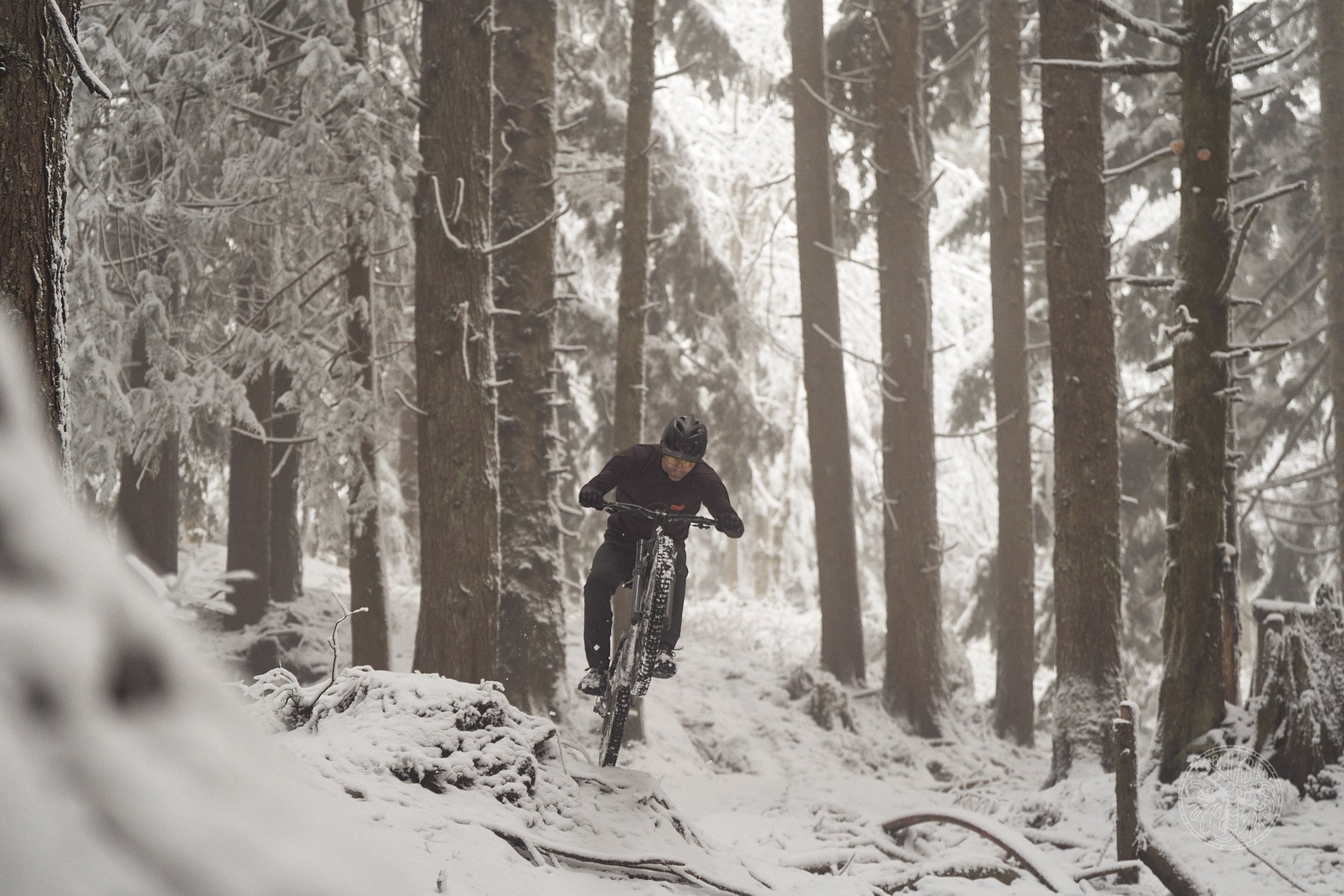
Capable and confident, these wheels didn't shy away from anything, even if the pilot wasn't so sure.
We Are One leave very little to be desired in their new Convergence line. Would I like to see more standard hub options? Sure, but at the boutique end of carbon wheelsets, it’s hard to swing a cat without hitting a Hydra hub, so We Are One is in good company. Here’s hoping that the freehub engagement discussion leads to a fresh outlook on what constitutes “high performance” when it comes to hubs.
With durability and ride quality that easily keep up with the best of the best, it’s ironic that these Canadian hoops are less expensive than many of their foreign-made counterparts. With the arrival of Convergence, I suspect the competition will all be sharpening their pencils for some time to come.
Convergence - Wheelset / Industry Nine Hydra hubs: 1,999 CAD / 1,799 USD
Convergence - Rim Only: 605 CAD / 475 USD
Age : 40
Height : 1803mm
Weight : 86kg
Ape Index : 1.03
Inseam : 787mm
Bar Width : 780mm
Preferred Reach : Pretty comfy at 487mm these days.
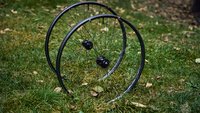


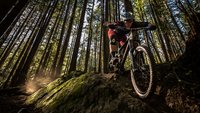





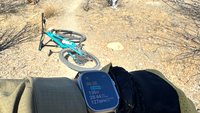
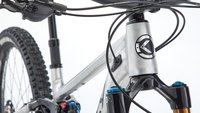
Comments
Offrhodes42
1 year, 1 month ago
To resolve pedal kickback I suggest everyone ride a hardtail and do not touch your brakes.
Reply
Niels van Kampenhout
1 year, 1 month ago
Removing the chain before dropping into the descent works really well too!
Reply
IslandLife
1 year, 1 month ago
Just wrap it around your neck a couple of times....
Reply
ackshunW
1 year, 1 month ago
I’m not in the market for carbon wheels any time soon, but I love what WAO are doing, and enjoy reading Ryan’s reviews.
But mostly, dang that one picture on the humpback woodwork in the snow!! ——- Awesome pic and awesome riding! Really captures a moment, I can feel the slight slipping of tires just sitting here.
Reply
Ryan Walters
1 year, 1 month ago
Thanks for the kind words! That move was certainly dicey that day. What you can't see is the snow covered, flat-topped log entrance to the up-and-over. Classic Shore!
Reply
taprider
1 year, 1 month ago
Regarding high vs low engagement hubs. Technical climbs/Impossible climbs are my thing. I have regularly used everything from an 18pt DT 350 to a 72pt Chris King, and do not experience that higher engagement hubs help for my riding style.
When climbing slowly, trying to soft pedal the easier sections of the climb to recover, then surging for uphill features, I find that before a hub will engage, you first have to get your feet rotating almost twice the rpm of your wheel, before any hub will engage, and by that point (with any hub) my feet have already rotated more than 20 degrees.
Also, for technical climbing, I really don't coast much, I soft pedal - near track standing - keeping tension on the chain/hub always engaged, in between the surges, so another reason that quicker hub engagement is meaningless to me.
Reply
Ryan Walters
1 year, 1 month ago
Andrew Major and I discussed this very technique a few days ago. I make my 20* of engagement work for me by always keeping my freehub engaged on climbs. “Soft pedalling” as you put it. I like it!
Reply
NealWood
1 year, 1 month ago
The other reason to ratchet is to avoid pedal strikes over the crest of tech climbs.
Reply
Cee Cee
1 year, 1 month ago
Or anywhere your wheel speed is near zero and a crank/pedal strike pushes or threatens to push it below zero, and regaining balance and momentum is crucial
Reply
Jerry Willows
1 year, 1 month ago
Industry hype train to sell more product.
Reply
Niels van Kampenhout
1 year, 1 month ago
My experience is similar to yours. When people talk about "ratcheting up a technical climb" I don't really recognize that. I haven't had any issues cleaning Shore technical climbs on low engagement hubs and I haven't really found high engagement hubs to make a significant difference either. Whenever I don't clean a climb I blame my line choice, fitness, skill, last night's beer, but never my hub's engagement.
I suppose the closer you get to trials style riding, the more sense a high engagement hub makes. I ride trails, not trials, so I can't really judge how significant the difference is.
Reply
taprider
1 year, 1 month ago
The trials Manifesto was to not hippity hop, but they didn't include pedal kicking as a hop, where with a sharp pedal stroke they launch in the air to land on a non-rotating rear wheel (way above my skill level). However, my personal manifesto is to simply try to keep the wheels always rotating.
Reply
Andy Eunson
1 year, 1 month ago
Same here. I feel that high engagement hubs are a marketing ploy to a certain extent similar to high range cassettes. Wide range usually has gears that never or rarely get used. While one can feel the difference between a high engagement hub and lower engagement, does it actually make a difference in climbing? Not for me. I think higher engagement hubs may suffer from fewer chipped pawls though because they engage quicker and you don’t ram that pawl into the ring gear. Back in the days of Shimano two pawl free hubs, I’d go through one freehub a year because the pawls would become chipped which was not assisted by the poor sealing of the drive side.
Reply
Ryan Walters
1 year, 1 month ago
My experience has been the opposite. High engagement hubs rely on smaller teeth / surface areas to engage, and generally must retain tighter tolerances to engage all teeth at the same time. Certainly in the DT world, the lowest engagement ratchets are the most reliable.
Reply
Andy Eunson
1 year, 1 month ago
Yes that’s true. Or can be. I did mess up a DTSwiss ratchet once. Using a slight coating of grease kept the issue at bay.
Reply
taprider
1 year, 1 month ago
although, I do agree with Andy somewhat. I would rather rely on a Chris King than an old two pawl Shimano when 100 km between towns
Reply
Tim Coleman
1 year, 1 month ago
Definitely a DT thing, I haven't had any luck with anything higher engagement than the 36 tooth ratchets. But on the P321 or I9 Hydras I haven't had issues with the ring gear / pawls. My beef with the Hydra have been axle / bearing life.
Reply
Justin White
1 year ago
I'd argue the low engagement ratchet just has longer maintenance windows, not actually more reliability. If you keep a 56t star-ratchet clean and lubed, it'll keep going for quite a while, with not much more chance of sudden breakage vs an 18t.
DT claims the entire ring having contact is why they're so awesome. More or less teeth isn't changing that contact area by much. Are they wrong? Isn't that the whole benefit of the system over pawls?
Reply
Tim Coleman
1 year, 1 month ago
Same here, I don't find any major benefit on technical climbing with a high engagement hub. That said I do really like high engagement hubs descending though, particularly on the enduro bike. There is much less shock to the drivetrain when laying into the pedals out of a corner, and I like the quicker engagement when ratcheting into something gnarly.
Reply
Jerry Willows
1 year, 1 month ago
Aaron Gwin says you don’t need to pedal out of corners.
More hub engagement, more drag when coasting as well.
Reply
Tim Coleman
1 year, 1 month ago
The fastest hubs I've ridden are the Project 321s, I never lose a coaster race down Indian River Road. They spin longer and faster than anything else I've had and they've got all the engagements.
Reply
Jerry Willows
1 year, 1 month ago
I was more comparing same manufactured hubs. The Onyx hubs would probably have the least drag out of any hub
Tim Coleman
1 year ago
Huh, interesting. I've never thought about that before. Is this from your experience, or found out some other way?
Justin White
1 year ago
"and I like the quicker engagement when ratcheting into something gnarly"
Isn't that technical climbing?
Reply
Tim Coleman
1 year ago
I dunno, if you consider these technical climbing, then yes:
https://nsmb.com/media/images/IMG_5334.original.jpg
https://photos.app.goo.gl/qu9khdkJaKUCeBBj7
Reply
Justin White
1 year ago
I've also deformed the tips of the pawls on more than one low-engagement hub (18-24 POE). And I definitely can feel it when climbing. The delay between you pushing on a pedal and having it freefall a couple few cm before getting any feedback. Slamming into the pawls is detrimental to balance, traction, timing, the pawls themselves.
Reply
Onawalk
1 year ago
Counter point, not everyone wants or needs the same thing. we all ride in different areas, on different bikes, and have different styles/abilities.
Just because something doesnt work for you, doesnt mean that its a marketing ploy, just means its not for you.
Personally, I like a hub with about 70ish POE, (CK, Hadley) Dont overly like 18POE, but I'll happily ride most things.
Got a set of Hydras on a bike I traded, and its noisy and full of bees. It wouldnt be my first choice, but I'll run it.
Reply
lkubica
1 year, 1 month ago
The subject of pedal kickback is a really fascinating one, and I am waiting for someone to do some scientific measurements, here. I think employing suspension telemetry, some braking sensors and wheel speed/acceleration sensor one could really get to some meaningful conclusions.
This year, out of winder boredom, I bought an O-Chain. Riding z Meta 29 (single pivot with a lot of PK), I though there will be a noticeable difference. And as usual things are not simple at all. You can feel the difference, but this difference is not affecting my ride (mean speed) in any meaningful way. Maybe because I am already using a low engagement hub (DT 370). Bike is MUCH more quieter, I had to remove chain guide to install O-Chain and there is no difference in bike quietness (which is a big pro). The traction is more or less the same, and I am riding in snow, slop, mud, wet roots, wet roots under snow, every sh*t you can think of on trails which are not overly steep, but definitely rough.
This braking thing, I am not so sure about it, you see, your wheel either skids or it does not. If it does not, it means it has to spin only a little bit slower than it would without braking. Or put differently, wheel slows down gradually if you don't skid. If it skids, sure, you have PK, but this does not happen too often.
Reply
Ryan Walters
1 year, 1 month ago
The thing to remember is that O-Chain doesn’t solve the issue either. As far as I understand it, O-Chain just puts small rubber springs into the chainring. These will take the edge off pedal kickback, but won’t eliminate it. Think of it as a drivetrain “damper”. I would imagine O-Chain might be effective for flat pedal riders who find themselves blowing off the pedals due to the effects of pedal kickback.
Low engagement freehub bodies don’t really solve the issue 100% either, they just make it less likely to occur. In a world of options, the low engagement freehub body is the low hanging fruit of solutions.
High pivot bikes in which the drive length of chain actually shortens under suspension compression are a scenario where there is theoretically no chance of pedal kickback. Ever. Norco Range comes to mind.
Reply
Tim Coleman
1 year, 1 month ago
The low engagement hub doesn't solve this either though, but it does reduce the frequency / severity of occurrence. IE if the pedal kickback event happens right as the tooth engages the pawl, you're getting all of the kickback.
The O-Chain has adjustable amounts of rotation, so if the O-Chain rotation was more than the pedal kickback of your bike it would damp and eliminate the kickback at the crank.
Reply
Ryan Walters
1 year, 1 month ago
Yup, never did I say low engagement eliminates kickback, just reduces the frequency. And O-chain is still allowing kickback, it's just damped through a rubber spring. That spring is still causing resistance to your suspension moving freely. This is all minutiae at this point, there are plenty of ways to skin this cat, my preferred way just happens to be through the freehub body.
Reply
Morgan Heater
1 year ago
In a way a low engagement hub makes pedal kickback less predictable though, which might almost be worse.
Reply
Justin White
1 year ago
This. And it applies to starting pedaling when coasting, ratcheting, etc. Basically every interaction between pedal, rear wheel, and suspension becomes less consistent, less predictable.
Justin White
1 year ago
That "drivetrain damper" effect is the whole key. It would even be beneficial even with a low engagement hub, reducing kickback on those 50% of hits where the freehub is only going to allow less than half of the indicated degrees of engagement, thus adding back some of the consistency removed by low engagement.
And I'd say O-chain is the riper low-hanging fruit, since it comes with less drawbacks than a low-engagement hub:
Also, the Norco Range doesn't shorten the driven-chain-length: the idler is concentric with the single pivot that locates the rear axle, giving a fixed driven-chain-length. That is why it "theoretically" has zero pedal kickback. Along with zero of the "pedal kick-forward" (suspension movement would allow the pedals to be rotated forward without driving the wheel) that would happen with a shortening driven-chain-length. A shortening as described would also provide anti-squat approaching, or even less than, zero (pro-squat, per se), which is probably not ideal.
Reply
Ryan Walters
1 year ago
Ah, but you’re forgetting the chain wrap around the Range idler - it decreases as the suspension compresses. So technically chain length decreases slightly on the drive side(s). Even with the small effect of the “inverted Horst Link” on the axle path, I’m willing to bet this is the case.
Reply
Ryan Walters
1 year ago
Also, I need to reiterate that the point I was trying to make in the article was to make people think twice about ditching perfectly good OEM hubs that don’t have a zillion points of engagement. The lowest hanging fruit is to run what you brung.
The notion that high engagement hubs are automatically better in all regards because “reasons” is just ignorant. A lot of kool-aid has been consumed.
Reply
Justin White
1 year ago
"Perfectly good OEM hubs" is quite subjective, and replacing them is often less about just getting more POE and more about getting an better quality hub, and then while you're at it getting something with more engagement, because of those "reasons".
Reasons (without the passive-aggressive quotes that imply they're not real) which are actual objective things that riders can, and do, notice and feel. You're trying to say that low-engagement hubs are good for one or two very specific situations, and specific suspension designs. I'm trying to say that high-engagement hubs are good for a few other, more general, reasons, regardless of suspension design. And maybe most importantly because they add consistency to all situations, even the situations they're supposed to bad at.
Reply
Justin White
1 year, 1 month ago
"low engagement is less likely to cause pedal kickback while the suspension is compressing because there is more room to “float” between engagement points"
What about consistency? On either end of the "float" is the minimum kickback and maximum kickback. The larger the float, the greater the difference between that min and max. So with a low-engagement hub, even if kickback might be less likely overall, it's also more likely to be very different each time.
I'd much rather have the consistency of high-engagement and avoid kickback via a nice active suspension design that happily also gives max traction under power (when no matter what the hub engagement is, you're always "caught up" to the freehub).
Reply
Ryan Walters
1 year, 1 month ago
All good points, although assuming you're running a regular drivetrain with a suspension system that results in the axle-BB distance growing under compression (most bike designs these days, if not all) - no amount of "active" suspension is going to avoid pedal kickback.
I did mention that this "isn't for everybody", but in an apples to apples comparison, I much prefer the ride of a low engagement hub. 20* float is a lot when you think about it. Someone with more time on their hands (and better math skills) than me could certainly figure out exactly how much the chain grows on my Enduro, and then come up with the probability of the freehub engaging on any given suspension cycle. Also dependent on the cog you're in.
Reply
Justin White
1 year, 1 month ago
Of course, no pedal kickback is very hard to do (maybe impossible while maintaining some useful positive anti-squat) but more "active" designs with less kickback are possible, and they will always feel better in the case of a locked-up or slow-rolling wheel no matter the hub.
Oh yes, 110% preferential. But...
...again, I'm less worried about probability of the events and more worried about consistency of the events. Is it better (in general) to have a suspension that, with a locked rear wheel, always stiffens a medium amount*, or that sometimes stiffens a little and sometime stiffens a lot?
*(Yes, there is always a range, always "a little or a lot", but high-engagement shrinks the difference and leans more towards the "perfect consistency" end of that idealized spectrum, and that's the point I'm trying to make.)
Reply
Justin White
1 year, 1 month ago
The math (I think):
Approximate Chain Freedom Length = (cog-radius * sin(engagement-angle):
(An approximation that does not actually measure the arc length, but half the side length of an inscribed polygon with sides numbering 360/engagement-angle/2. So really all the chain freedom lengths will be slightly longer, but the ratios should be similar enough for comparison's sake. (Edit: and I found an arc length formula, and it's within a couple tenths of a mm for circles this size, so basically negligible))
Using a ~35mm diameter 21t Eagle cog:
20 degrees of engagement (18 POE) would give about 6.2 mm of maximum chain freedom, ~3.1mm average
5 degrees of engagement (72 POE) would give about 1.6 mm of maximum chain freedom, ~0.8mm average
With a locked wheel.
Smaller cogs give a smaller difference, larger cogs give larger diffs. For example, a 200mm 50t Eagle gives averages of 17mm for 20 degrees and 4.4mm for 5 degrees. 20mm 10t gives 1.6mm for 20deg and 0.45 for 5 degs.
Looks like a late model Enduro has about 30mm chain growth at bottom out, about 10mm at sag, pretty linear. Takes just 30mm of suspension movement to make 6mm of chain growth and thus always catch up to a hub with 20 degrees engagement and a locked wheel on a 21t cog. That's only 15mm of wheel travel to catch up on average with a 20 degree hub, ~6mm for a 5 degree hub. If a (15 - 6 =) 9mm bump (~3mm if you're hauling ass in the 12t or 10t cog) is going to wreck you... maybe got more problems than a number in a hub.
Note: I'm not saying it can't be felt in descending, I'm saying it's maybe not as important as some might think.
Reply
Ryan Walters
1 year ago
I think you win the comments section for today.
I’m going to take you at your word on your math, but I do think you’ve made a few sweeping assumptions. Still, impressed that you went to those lengths - for science!
Your arguments make me feel like I should try an O-Chain for real world comparisons. It would have to be a large gain in performance for me to accept the added cost/weight/maintenance of a component like that. The point I tried to make in my article is that the freehub body is absolutely the low hanging fruit. I’m curious if you’ve been able to do a back-to-back comparison of freehub bodies yourself? If not, you should give it a try. It’s hard to sell something that is low-tech and doesn’t make anyone any money. It works well for me, so if it gets a few people out there thinking and trying new things, then great!
Reply
Justin White
1 year ago
Not quite back-to-back, but I did have to switch back to an 18 POE hub for a handful of rides after a while on a 102 POE hub, and then back to the 102 when that wheel got fixed. I didn't notice anything on downhills (maybe I don't lock the wheel that much, nor creep down things with huge hits?), but noticed it A LOT when pedaling. Blew off the pedals a few times when I hit that long-end of the engagement window and the pedals spun unconstrained for way too long when trying to get back on the power after a ratchet or soft-pedal. It also just sucked up so much energy, and definitely impacted traction, trying to account for that larger free spin and subsequent impact between pawls: kind of like riding on ice where the first push spins the wheel and then you have to back off and soft-pedal to keep the grip.
I also had to re-tighten my RaceFace direct-mount chainring in the middle of the stint on 18 POE, which could possibly be attributed to the low-engagement hub raising the maximum impacts by allowing the whole system to move freer and faster before then catching up to the pawls and getting drastically slowed down. But really that's only correlation, not necessarily causation. Though I haven't had to re-tighten it with even more time back on the 102 POE, so...
Note again, I'm not saying that kickback is not a thing and can't be felt, and not saying that it has zero effect on the suspension. I'm saying that, maybe, a dozen degrees of (constrained) pedal movement isn't a much of a detriment as might be thought. It even provides nice feedback through the pedals of what the supension is doing: I can tell if I landed flat and slow because the pedals tell me instantly, as opposed to hearing and feeling the pawls slam into the drive-ring.
I guess I didn't/don't experience the "rear wheel is locked but I still need lots of very soft suspension" situation enough to notice it on either hub. So, like some others, I'm not convinced anyone actually experiences this very often, and not something else that feels the same. I mean, it could easily be anti-rise causing the suspension to squat into a firmer position and that's causing some bucking, since the being wheel locked is pretty close to maximum AR. Could be interesting to try to replicate the feeling with a range of hubs and bikes with differing anti-rise...
Reply
Ryan Walters
1 year ago
Yup, I was very clear that it’s something that most riders won’t notice. My problem is that once I get locked into nerd mode, I usually go pretty deep!
Andeh
1 year, 1 month ago
Let me start this by saying I like the idea of what WAO is doing, owed a set of Agents, and currently own a set of Unions (with Hydras). I've used their rim warranty twice, and it was simple and painless.
But after recently getting an ebike which came with a set of fairly low end set of Roval Traverse 28h alloy wheels, I did some back to back testing, riding both my enduro bike and ebike on the same trails with the Rovals and the Unions. Each time I swapped, I moved tires. Both bikes had Zeb Ultimate forks with Buttercups, EXT coil shocks, Dominion A4 brakes and GE1 grips. The enduro bike was fitted with an Ochain and 9 degree elastomer, which countered that frame's pedal kickback when braking. But my hands were consistently more fatigued on the enduro bike with the Unions. I didn't notice much difference on the ebike in terms of hand feel, other than the Unions held a line better. (Maybe some of that was due to running heavier, damper casing on the ebike?) So when I bought a new set of wheels to replace the Rovals, I got a set of Reserve 30 HD ALs with 350 hubs. These feel great on the enduro bike, and the set only weighs about 70g more than my Unions/Hydras. Similar awesome warranty as WAO, but cost $1,100 (USD) less than a set of Triad/Hydras.
My point is that I think that many of us have bought the story of carbon wheels being the best thing, but if we are objective about whether or not they actually improve the ride feel, they're probably not. Maybe it's a holdover from when MTBing was obsessed with every last gram (and when alloy wheels were made out of cheesium). Maybe it's because we're suckers for a set of gorgeous hand-laid carbon rims made in Canada laced to hubs made in North Carolina that sound like a Swiss watch. Nothing wrong with getting the pretty ones if that makes you happy. But seriously, consider a set of really good aluminum rims if you want the best bang for your buck.
Reply
Ryan Walters
1 year, 1 month ago
For me, the biggest win with carbon wheels is not having to true the wheels after every 2nd ride.
Reply
Lu Kz
1 year, 1 month ago
The *only* aluminum rim I've tried that holds up (and honestly would believe is as good in this department as carbon) is Spank Vibrocore if you can handle the increased weight. They're just brilliant. Game changer on the DH rig - for context, I spent a few years tightening spokes MID DAY at the bike park on all manner of alloy rims until the Vibrocores came 'round.
I think one of the biggest wins about WAO is the warranty program, which in my experience can be summarized as "Dont be an ass and you can probably get another rim.... and if you did do something monumentally stupid, don't tell us"
Reply
Skooks
1 year, 1 month ago
Your comment echoes how I feel about carbon wheels. I think WAO make a beautiful product that I would be happy to ride on, but for me aluminum rims work perfectly well. I never think about them or wish I was on something different. I am pretty easy on rims so don't need the warranty feature, but understand this is a big selling point for some people.
Reply
IslandLife
1 year, 1 month ago
When it comes to wheels that need trueing... I think you're maybe comparing well built wheels vs poorly built wheels instead of carbon vs aluminum. I've had both of each and found it had nothing to do with the material but a lot to do with the quality of the build. Thing is, most carbon wheel sets tend to be less "mass market" and since you're spending more money, also seem to have more time spent and QC on the build.
My latest aluminum wheel sets from Tairin have been faultless over almost a full season of riding. Going to be on aluminum from Crank Brothers this year... we'll see how good their factory build is. If it's close to how nice their boxes are, should be all good haha.
Reply
Tim Coleman
1 year, 1 month ago
The biggest reason for running We Are One rims for me is almost zero maintenance truing and tensioning wheels, and it's saved me money. After reviewing the Agents starting in 2017 I've run We Are One rims exclusively on my personal enduro bike and haven't broken a single We Are One rim yet, including having them on the DH bike last year (knock on wood). Before those wheels I was going through 2-3 aluminum rims a year, generally one front and one or two rears. With a decent aluminum rim now costing almost $200 plus $80 for a build, you're at $560 - $840 a year for rims. My return on investment is less than a year.
Reply
Andeh
1 year, 1 month ago
I knock my rear Union out of true every month or so. Not because I'm a super core rider, just that I do stupid tail flicks at the side of the trail more than I should. It only takes like 5 minutes in the truing stand to sort out, so no big deal. So the likelihood of having to true the Reserve ALs wasn't even a factor in my purchase.
Reply
Cr4w
1 year, 1 month ago
I think the big takeaway is to not assume carbon rims are better for every rider in every circumstance. In the 2011 timeline I was chewing up aluminum rims all the time and switching to Derby carbon DH rims (w/ Hope Pro 4 hubs) was a big improvement but wow were they stiff. When I switched to WAO Converts everything balanced out. I enjoyed the higher engagement Hydra hubs and the rims are so much more comfortable to ride. My guess is that modern alloy rims have come a long way and would probably deliver the same ride quality and durability at half the price. Wrecking rims and rebuilding wheels is a huge hassle so will I run this experiment? Not if I don't have to. My new bike will have a fresh set of WAOs.
Reply
Onawalk
1 year ago
Alu wheels dont seem to last me a season. I went through 3 rear wheels last season (albeit its a long season here in the Okanagan) I've always gone through wheels, must be my riding style. I finally decided on a set of Unions on Hadleys, and I have a season on them, and havent once touched the spokes. They remain dead straight, and unfazed by my lack of talent and skill.
They are more stiff than any alu wheel ive ridden before, for me, they work great, and I've grown accustomed to the stiffness, etc. When I switch to my Fugitive on I9 Enduros, it feels a little more vague, but after a km or 2, I dont notice it at all.
Over all, the additional cost of the WAO wheels should pay for them selves in potential alu replacements in 2 years
Reply
Gage Wright
1 year, 1 month ago
IMHO I cannot tell the difference in DH performance. I ran DT350s (without the star ratchet) and Onyx on both my hardtail and my Transition Patrol. I do notice the noise and thats what keeps me on Onyx. Maybe the horst link on the Patrol is just too good? I 100% notice brake jack on bikes so why can't I feel this? Maybe I am blind to the down sides of my hubs and have just gotten used to them?
If Ryan is going to lead the people down this rabbit hole of hubs negatively engaging the suspension I praise the holy loam mother goddess of speed and steeze that he did not try to sell O-Chain.
Can we get some time trials from the good folks at NSMB? I purpose a head to head of Onyx v. *other to test if you can see the affects of hub engagement on suspension.
Reply
Ryan Walters
1 year, 1 month ago
Well, it could be argued the other way - maybe your Patrol suffers more brake induced effects on the suspension than my Enduro? If this was the case, it would be much harder to feel the pedal kickback under braking. Your Patrol has less travel as well, so again, harder to detect.
I find the Enduro has excellent suspension performance while braking, one of the reasons I like it so much. Compared to most other bikes, Enduro remains very active while braking.
Again, the freehub body effect is super subtle, and there are many input variables that will affect it.
Reply
Gage Wright
1 year ago
Hard to tell what’s what when your riding rough trails.
Most readership would probably do well to stay out of their head, including me, and ride their bike with more trail confidence. I often go looking for things to notice or make marginal gains on with these sorts of topics.
Man, those enduros. I only hear good things. There is not a bigger statement to make than to see NSMB shredders keep any bike in their shed for more than a year or two when given a plethora of nice state of the art bikes. Trevor, Jer, you to name a few.
Reply
Ryan Walters
1 year ago
Haha! Compliments accepted!
No bike is without its quirks, and the Enduro is no exception - but it certainly is well suited to our local terrain. It seems due for an update though, and I’m excited to see what Spesh have up their sleeves.
Reply
Chris Anderson
1 year ago
I love my Onyx hubs. But there is a bit of "squishy engagement" which i dont notice on the trail just in the "parking lot test" if i have my rear brake on and push on the pedals. Doesnt bother me one bit and I think it may actually help absorb some of the feel of pedal kickback. Not that different from what O chain does I guess. I'm addicted to the silence on my rides so i'll take the squish and weight penalty all day! Just got a new bike that came with DT 350s. Forgot how much I dislike the sound of a pawl engaging and that metallic "ting" sound when ratcheting when you're at a stand still and taking up the slack in the hub.
*I do realize the 350 is a ratchet not a pawl, but makes the same noise when it first engages
Reply
MTB_THETOWN
1 year, 1 month ago
It appears that they have a different rim profile for 28h and 32h rims so that the Spokes will line up. I wonder how that affects the stiffness of the 28h vs the 32h, whichare also typicallyfront and rear respectively. Seems like they could really optimize the 28h vs 32h layups a bit as well.
That also meants a lot of molds, so I'd expect this design to stock around for a while.
Reply
Guy-Charles Valois
1 year, 1 month ago
I'm a little off-topic here, but do you have plans to review the canadian-made Tairin S1? As a concept, they tick a lot of boxes for me: silent, DT star ratchet inspired system and even a few degrees of engagement.
Reply
mrbrett
1 year, 1 month ago
* Canadian-assembled
Reply
pedalhound
1 year, 1 month ago
I am thinking about pulling the trigger on these...been watching the progress for what feels like years...stoked that he was finally able to release them!
Reply
Justin White
1 year, 1 month ago
I'm highly skeptical of how much suspension movement you really need, and will even be utilized, when your rear wheel is locked up. Just to start, the impact forces of a locked wheel being unable to "roll-over" obstacles is probably going to be a lot more than the added impact force from a stiffer suspension. The friction of dragging the wheel up and over a square edge minimizes the upward force vector drastically compared to rolling up and over, meaning suspension movement that usually allows the wheel to "get out of the way" is just not going be generated to begin with, so there is less for the suspension to deal with no matter the stiffness.
Add in anti-rise squatting the suspension a bit, and at it's maximum force just before/around lock-up, and probably other forces I'm nothing think of... And I'm starting to think pedal kickback is just one [minor?] factor in a whole bunch of things effecting traction with a locked up wheel.
A bike with moderate anti-squat, pedal kickback, and anti-rise can diminish most of the detrimental effects on traction from a locked up wheel, and it will do it all the time without the inconsistency of a low-engagement hub.
Reply
Ryan Walters
1 year, 1 month ago
The actual efficacy of active suspension while the wheel is locked certainly has occurred to me as well. I feel it's one of those tiny slivers of performance that can make a difference when you're on the ragged edge. I mean, look at DH and enduro racing. Milliseconds matter, and it's such a fine line between winning and disaster.
It's an effect that I can feel, and it's no secret that confidence on the bike and in your equipment is half the battle, right?
Reply
Justin White
1 year, 1 month ago
110% go with what makes you confident, no doubt.
But, considering those milliseconds... having the rear wheel locked in a rough section is going to eat way more milliseconds just from friction before the suspension's willingness to move is even in the equation, especially considering how little suspension movement it takes to catch up to even a pretty low engagement hub.
For anything not a DH bike, I'd think spending time on braking technique and experimenting with pads and rotors and tires and such to help prevent unwanted lock-ups, before sacrificing suspension and pedaling consistency with a low-engagement hub. Even for DH, I'd pick an O-Chain and mid-to-high-engagement before low-engagement only, for the consistent suspension feel that will give me confidence.
Reply
Sebov
1 year, 1 month ago
Interesting hub considerations:
Never could experience that because I just had 36T hubs lately. Liked the quick engaging e*13 for the uphill though. But I sold the bike with those e*13 wheels very fast again.
New DT350 is almost the old DT240 - no need to worry and my favorite hub so far. Newmen Fade is also quite okay: silent and spins without much/any love. All you need. Don’t want any other hubs because benefit froms costs is excellent for those „low tech“ 36T hubs.
Reply
Andeh
1 year, 1 month ago
I do notice that the DT 350 bearings (with the 54t ratchet) spins much smoother/longer than my Hydra with a fresh set of Enduro bearings and fresh Dumonde oil on the ratchets.
Reply
Morgan Heater
1 year ago
People that like the feeling of the Ochain and/or low engagement hubs should try riding a pinion equipped bike and report back. The freewheel in the gear box lets the chain-ring spin freely when the lower chain/belt grows. I'm somewhat convinced that this has more of an effect on how amazing the traction feels on gearbox bikes than the reduced un-sprung weight. It's probably both.
Reply
Justin White
1 year ago
A normal freehub will allow for growth in the lower chain as well. It's the upper run of chain that is under tension and applying the forces that cause pedal kickback (and anti-squat). The one-way freewheel still pulls on the chain in the same way, no matter where is it located, because the whole system is still turning the same way to transmit power. Besides, lower-run-chaingrowth is already accounted for by the derailleur or stand-alone tensioner (for gearboxes) no matter where the freewheeling part is.
I'm not sure where this idea that moving the freewheel forward removes the effect of chain growth, but it's been spread by both gearbox, e-bike, and CentreHub-alike proponents, and I'm pretty sure they're all wrong.
Reply
Morgan Heater
1 year ago
In my mind (maybe incorrect) derailleurs, especially clutch derailleurs maintain a decent amount of chain tension on the bottom of the chain, and the combination of chain tension and inertia (from both sides of th chain) can impart a pretty decent force to the cranks as the real wheel bounces through rough terrain. Not exactly classic pedal kickback, but it seems relevant when you watch slow mo' videos.
Reply
Justin White
1 year ago
Any added* tension or inertia from the bottom run of chain bouncing would actually reduce kickback, since it would be trying to pull the cranks into their normal pedaling rotation. If a crank-side freewheel does anything, it minimizes that force (very slightly) by letting the bottom chain run spool out freely without even going through the derailleur, so would actually add to kickback. And the chain might be going through a front tensioner on a gearbox bike, so no gain or loss there at all.
*Except I don't see it adding anything, since pulling on the bottom run of chain is literally what backpedaling is (and coasting, in a way) and is explicitly what a freewheel, in any position, is made to allow for.
Reply
Ryan Walters
1 year ago
Agreed. Very strong derailleur clutches can minutely affect the suspension as well.
Reply
handsomedan
11 months, 3 weeks ago
Has anyone who has ridden both the union (or another revolution rim) and the triad (or another convergence rim) comment on the value for price differential? For someone buying new, is it worth the extra $130 per rim?
Reply
Blownoutrides
11 months, 2 weeks ago
Spokes on my new WR1 convergence wheelset are pinging when climbing (rear) and braking (both). Sounds like a music box when headed uphill.
I've got the 30mm front and 33mm rear, Sapim CX Ray spokes, i9 hydra hubs. I've tried putting a drop of oil on each spoke crossing but it only helps for one ride. Spoke tension on high tension side is about 95kgf (115kgf max per WR1 specs). The wheels did not make this noise on the first half dozen or so rides, but now I've got a couple of dozen rides in and the noise is really getting on my nerves. I've used CX Ray's on two previous wheel sets without issue (both NOBL TR 41's).
I'm 6'4" 245lbs. Wondering if the shallow rim profile on the Convergence wheels meant to promode vertical compliance is just too compliant under my weight and is just stretching/detensioning the spokes.
But I digress...
Any input greatly appreciated.
Reply
Please log in to leave a comment.